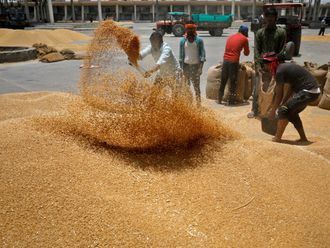New Delhi: Uttar Pradesh is poised for multi-cornered contests in almost all its 80 seats.
While the state’s ruling Samajwadi Party and its predecessor Bahujan Samaj Party (BSP) and the fledgling Aam Aadmi Party (AAP) are going it alone, the national rivals, namely the Congress party and the BJP, are wooing voters with pre-poll alliances.
The Congress party has the Rashtriya Lok Dal (RLD) as its ally, while the BJP has aligned with some smaller regional parties to avoid the splitting of votes.
Barring Rae Bareli and Amethi where Samajwadi Party has not put up its candidates against the Congress party chief Sonia Gandhi and her son Rajiv Gandhi as a goodwill gesture, all other constituencies will witness multi-cornered contests.
The BJP which had won just 10 seats in the last two general elections from the state is going to voters revived, revitalised and reenergised, riding the so-called Modi wave.
The party’s revival in the state where it lost power in 2002, ironically when its incumbent president Rajnath Singh was the state chief minister, is at the cost of the Congress party and to some degree the Samajwadi Party.
Interestingly BSP has regrouped after being voted out of power in 2012 and may pose serious questions to other parties in many constituencies, while the Samajwadi Party’s slide is the most intriguing within two years of it sweeping to power in the state.
Mulayam Singh Yadav’s dream of becoming the next prime minister rested on his calculations that his party would win at least half the seats, if not more, from the state.
However, a series of follies, especially its bid to woo Muslim voters, is threatening to boomerang as its inability to control the Muzaffarnagar riots and punish the guilty has isolated it from Muslim voters who now want to vote for any party or individual capable of defeating a BJP nominee in a given constituency.
The Samajwadi Party would be hard pressed to retain the 23 seats it had won five years ago.
The riots only helped the BJP consolidate itself and galvanise its pro-Hindu votes that had deserted it for the past 10 years. Added to that is the Modi factor and pollsters are predicting that the BJP may emerge the big winner from India’s most populous state this time.
The Congress party, which surprised many by winning 21 seats from Uttar Pradesh after rejecting Samajwadi Party’s offer to contest dozen seats as its junior partner in 2009, is somehow unable to overcome the shock of an extremely poor performance in the 2012 Uttar Pradesh assembly elections.
The AAP on the other hand is totally untested in the state. Besides the fact that it has its central office in Kaushambi, a colony in Uttar Pradesh on Delhi’s border, its only other hope of doing well in the state is that it has put up two of its best candidate in Arvind Kejriwal and Kumar Vishwas against the two most realistic next prime ministerial candidates, namely Modi at Varanasi and Rahul Gandhi at Amethi.











